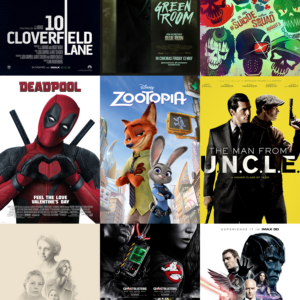I still have friends that complain about product placement in movies. It used to be something that got to me as well but many years ago I kinda just got over it. Why? Because it properly reflects a realistic version of the world we live in.
Look down at your clothes, look at your desk, look out the window. You see product labels over everything. Your shirt might have a huge SUPREME written across it (if you’re one of the cool kids that is!). Your pants might have a red Levi’s tag sticking out of it. Your shoes mights have the unmistakable 3 stripes that are synonymous with Adidas. Look at your computer/phone/tablet that you are reading this on what logo is staring back at you? You have headphones, eating lunch, putting on nail polish? Almost everything has glaring labels. So why wouldn’t the media we take in reflect that?
When people think of product placement they think film and TV but the earliest instances to product placement also include literature and paintings. Examples of this include shipping companies lobbying to be included in the 1873 Jules Verne epic “Around the World in Eighty Days”; the inclusion of distinctive bottles and labels of Bass Beer beside a bar maid in Manet’s painting “A Bar at the Folies-Bergère”; and in films produced by the Lumière brothers in 1876 featured Sunlight Soap which may be the first instance of paid product placement.Â
But at that point not everything had big, distinctive labels. This is a combination of things being made by hand/at home and products not yet fighting for market saturation. So having scenes in media not filled with labels made sense.
Since then there had been a steady increase in the inclusion of specific products and names used in media, whether paid or not, to improve the awareness of specific products. In some cases this strategic placement saved companies. One of the most famous cases is RayBan where placement in Tom Cruise movies starting with Risky Business as he wears their now classic wayfarers and then in Top Gun where he sports their aviators is said to have brought the company from the verge of bankruptcy.
But in the 80s and 90s that product placement came to a pinnacle where it was so abundant and obvious that it became a bit of a joke in itself.Â
After that there wasn’t really a decrease in product placement but more of a mindful adjustment of how these products are placed in films and on television. They are placed in an environment in such a way that it isn’t obvious but at least seen my the audience and when interacted with, they aren’t actively focused on.Â
But also to get around product placements some productions went with “faux placements” where they replaced products with fake products/companies created for the show or film. Such as Morley cigarettes in “The X-Files”; Big Kahuna Burger in Tarantino films; Mooby Corporation in Kevin Smith Movies; and there are many more.

But since those initial placements, our world has changed drastically. Films now a days would not look right without product placement. Like I mentioned at the start, our world is littered with labels, product names, and neon signs. Being somewhere or showing a film devoid of that just seems strange. Like trying to be normal, but a bit too normal, and then that just makes it weird.Â
Some films and TV shows are still much more blatant with their product placement and that can be annoying.
We get it! You’re driving __________ cars in this movie!
But many have learned to integrate this in a much more natural, realistic way. And really that is just a true reflection of life.
![]() TraÂ
TraÂ



Leave a Reply